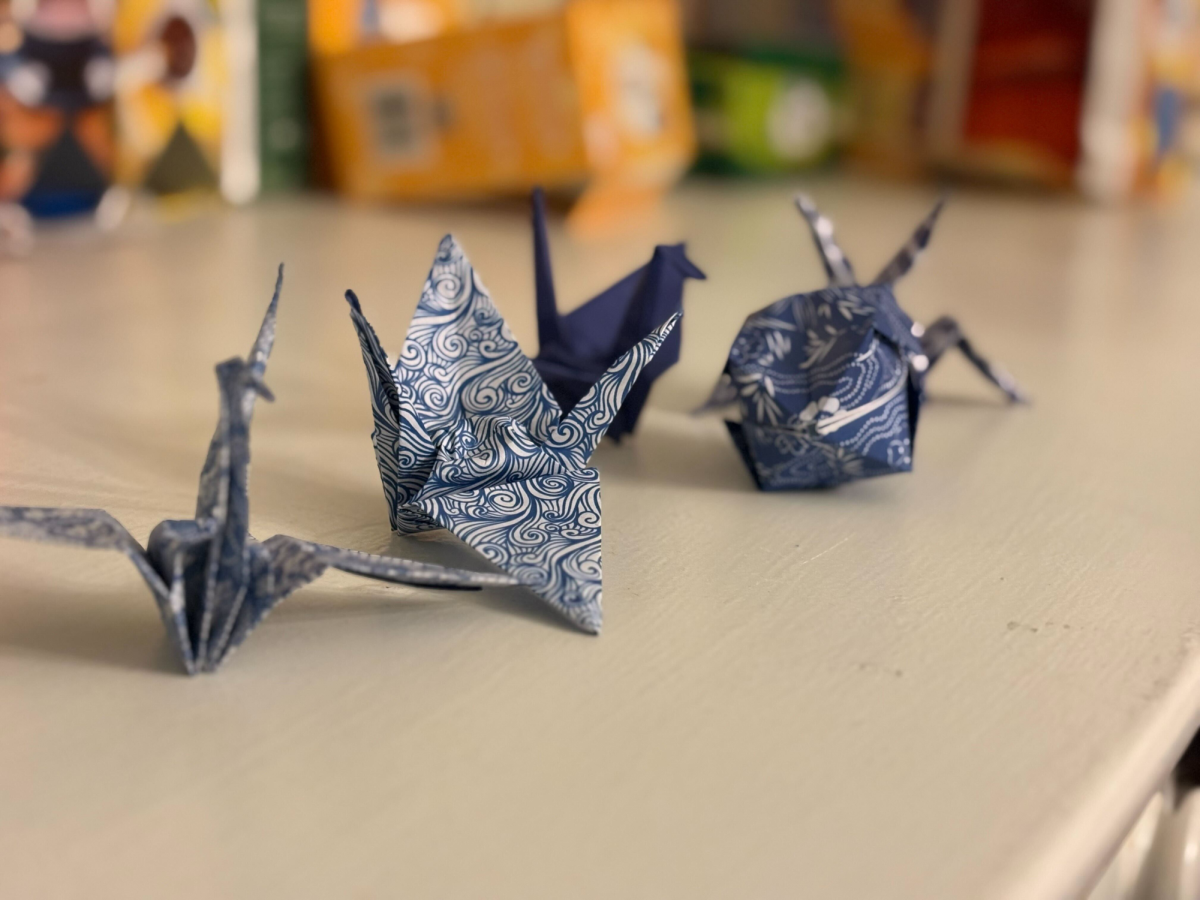Land acknowledgment is not just an issue for Indigenous people; it is the responsibility of Oberlin. In order to pay respect and promote visibility for the Indigenous people who came before others, land acknowledgment is a necessary duty for current residents. Members of the Oberlin community standing here each day are the ones tasked with driving this recognition and growth, such as realizing that they are carrying forward a relationship with land that is not with its rightful stewards. It is an issue concerning all who live in the United States because its foundation as a country was built by taking away the foundation of others. Evidence of Indigenous history and culture is still present, but it’s unknown to many of those residing on this land. Stewardship has been neglected, making lands spiritually unrecognizable and changing whole ecosystems and ways of life.
Because land acknowledgment is relevant to all branches of Oberlin, the enforcement of respect and visibility toward Indigenous people requires the effort of the entire College. To this end, the College formed the Working Group on Indigenous Matters, consisting of Business Coordinator for the Oberlin Student Cooperative Association Sundance (Muskogee), Director of Admissions Tom Abeyta (Tiwa Isleta Pueblo, Kanaka Hawai’i), me (Kanaka Hawai’i), as well as several other Oberlin students, faculty, and staff.
Associate Professor of Anthropology and member of the Working Group Amy Margaris, OC ’96, revealed the efforts that individuals and groups at the College have taken to compensate for the institution’s lack of initiative.
“Many, many colleges in the U.S. have already coined land acknowledgments, often prominently displayed on the institution’s website and the bottom of employee emails,” Margaris wrote in an email to the Review. “Oberlin College hasn’t done this. So on one hand, we’re behind the curve. On the other hand, in recent years individuals, departments, programs, and offices have, quite organically, begun devising their own land acknowledgments — starting by researching the admittedly complex story of the Native communities who stewarded this area’s lands and waters before the founders of the Oberlin Institute.”
Although Oberlin has not yet formally included land acknowledgments, Margaris discussed the conversations and plans of action that have taken place within the College community regarding this issue.
“And now many of us have come together to form a working group whose most immediate charge is to thoughtfully research, discuss, debate, and devise a land acknowledgment for Oberlin College,” Margaris wrote. “The draft that we’ll be submitting for faculty approval is up-front about the continued arc of past dispossessions, but also acknowledges Oberlin’s present day Indigenous residents.”
Members involved in this movement have also raised questions about ways to better serve those who resided on this land before the College did.
“Indigenous students, employees, and community members — how do we make Oberlin a more welcoming space for them?” Margaris wrote. “What specific actions can ‘Oberlin’ (individuals, offices, the whole institution) take to make the future better than the past?”
Curator of Academic Programs at the Allen Memorial Art Museum Hannah Wirta Kinney, another member of the Working Group, discussed why it is of specific interest to Oberlin to include a land acknowledgment.
“I think it is particularly important for Oberlin to have a land acknowledgment because there are no federally recognized tribes in Ohio,” Kinney wrote in an email to the Review. “I think this has led to misinformation and confusion. When we started this project, we brought together many different land acknowledgments and discovered that they named many different tribes and nations. The new land acknowledgment will help clarify this and also allow members of the community to better understand the acts of dispossession that led to the founding of Oberlin.”
Efforts to include a land acknowledgment reflect the College’s values of cultivating students’ sense of belonging and community, as Director of Admissions Tom Abeyta wrote in an email to the Review.
“Adopting a land acknowledgment aligns with Oberlin’s mission to create a diverse and inclusive learning environment for our students,” Abeyta wrote. “As the current steward of this land, we also see it as an expression of our commitment to a sustainable society.”
Campus Energy & Resource Manager Joel Baetens, who also participates in the Working Group, emphasized the importance of shifting perspectives surrounding land acquisition.
“What this means to Oberlin, like any other college or town on Turtle Island (North America), is that acknowledging that this land was never honestly acquired is the first step towards reconciliation that is long overdue,” Baetens wrote in an email to the Review.
Sundance expanded upon the initial steps that are necessary to creating positive change at Oberlin.
“I think that land acknowledgments are, in general, important first steps,” Sundance wrote in an email to the Review. “I am mindful that restorative justice cannot occur unless Settlers are willing to take a long and uncomfortable look at the realities of the past and how those historical realities intersect with and define contemporary realities of privilege and oppression. As an educator and a leader of a national liberation organization, my role is to advocate for any mechanism which will ultimately result in the liberation of Indigenous peoples; I use land acknowledgments as a foray into those difficult issues.”
Each of the members on the Working Group comes from a different background, bringing their own perspective and expertise into the conversation over land acknowledgment. They demonstrate the aforementioned sentiment that the College’s land acknowledgment would be valued by many different groups at Oberlin.
“The Admissions Office welcomes thousands of visitors each year,” Abeyta said. “When we open our events with a land acknowledgment, it demonstrates our willingness to engage in dialogue about our complex history and hopefully spur on tangible ways to reconcile with our past.”
Kinney revealed the ways in which this initiative has impacted other areas of her life and career.
“Working on the land acknowledgment for Oberlin and learning through Indigenous people and other Oberlin colleagues has been transformative to my work as a museum professional,” Kinney wrote in an email to the Review. “It has allowed me to see with new eyes the way in which museums often reinforce settler colonial values and, importantly, envision ways of changing and challenging those systems.”
Although Oberlin boasts its image as a progressive institution, it has yet to officially acknowledge the historic significance of the land it dwells upon.
“For Oberlin College, a land acknowledgment presents an opportunity to refute the narrative of white supremacy that is rife throughout Ohio, namely that Native peoples consented in the transfer of Ohio into the hands of Americans through a ‘cooperative’ process … which naturally included coercion and capitulation,” Sundance wrote. “Until such time as the College adopts a land acknowledgment to illuminate these historic injustices, it is hypocritical for it to assert its stance as a supporter of a just society.”
Making the College a safer space for indigeneity starts with righting the wrongs of the past. Creating opportunities and support for Indigenous students, as well as enrolling more Indigenous students, all start with addressing the past. Moving forward is about leading with intention and trying to better understand Indigenous ways of thinking, especially about land. Mending relationships with indigeneity requires nurturing a different mindset than that of colonial figures. It is about respecting and giving visibility to Indigenous people and truly understanding what has been lost. That is why land acknowledgment is only the first step. The most important thing now is to ask what members of the College can do next for indigeneity at Oberlin.










